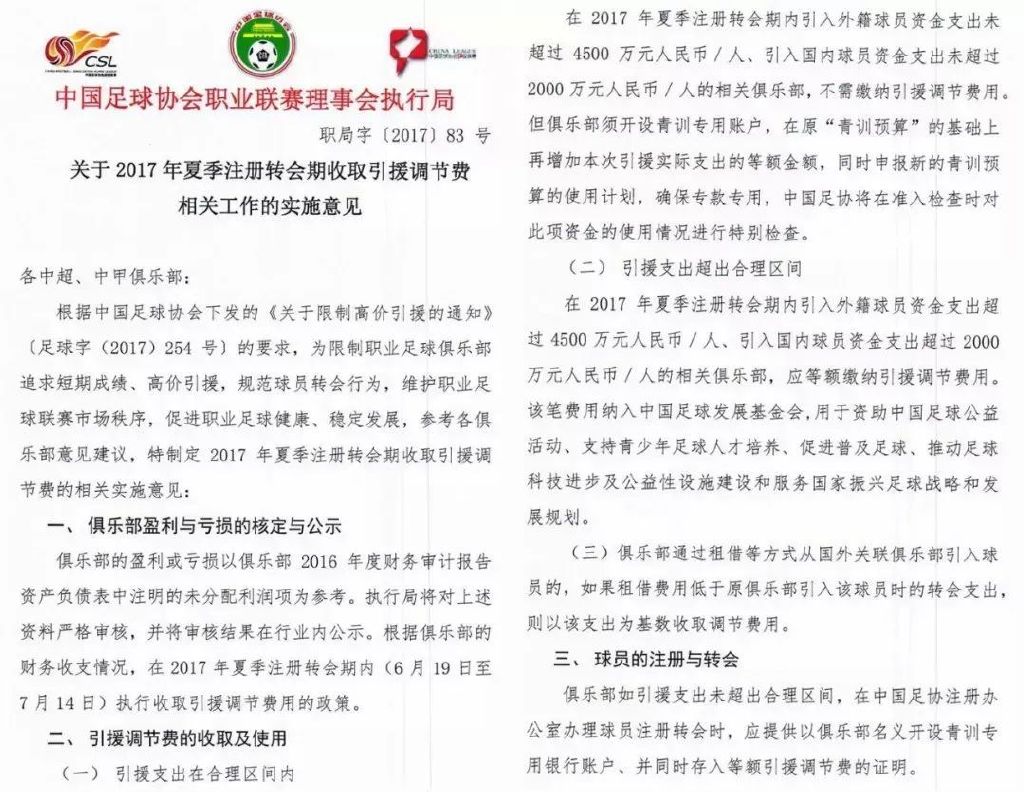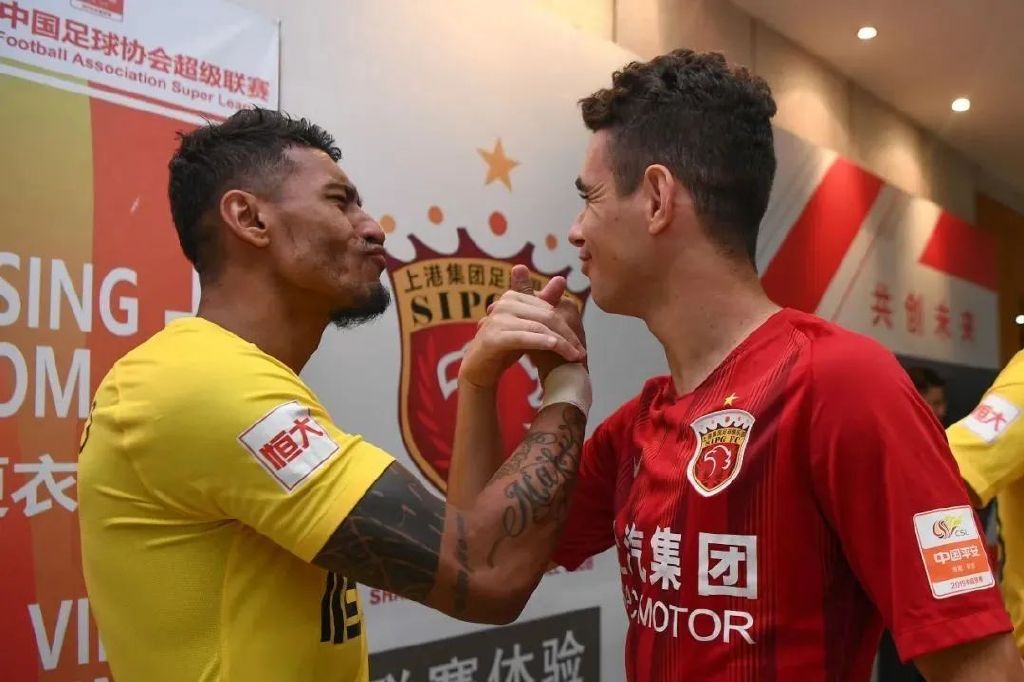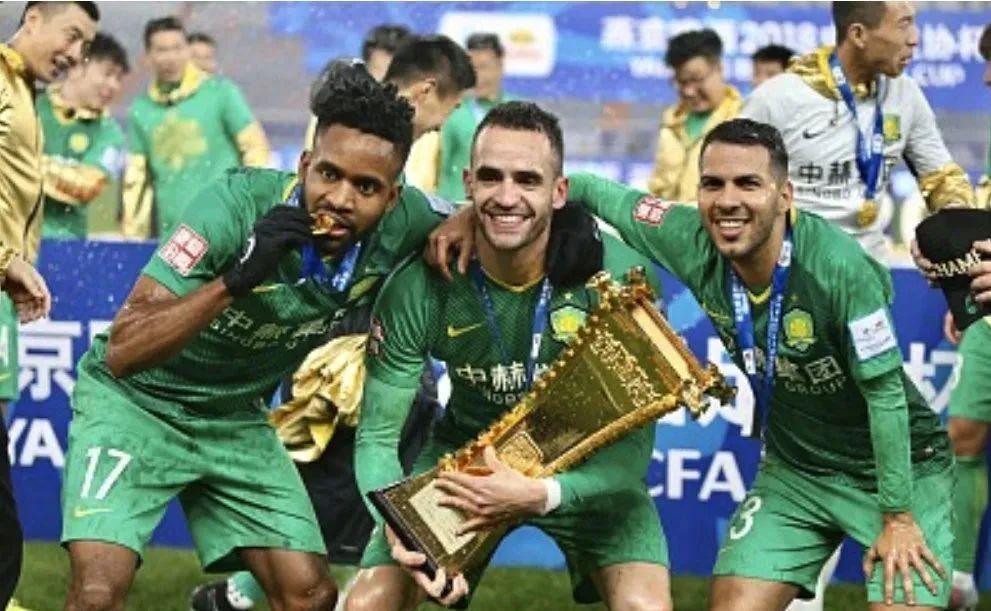When the referral adjustment fee has reached the point where it must be settled, how much will it be refunded? How is it regulated?

The reporter reported coldly The method of restricting excessive investment by clubs regardless of the cost, from UEFA to the five major leagues, to the neighboring J-League, has generally adopted the Financial Fair Play Act, but only the Chinese Football Association has adopted the method of charging a 1:1 "adjustment fee" to the club, resulting in a historical legacy of more than 8 years and a total amount of 1.8 billion yuan.
25% of the adjustment fee should have been refunded
The adjustment fee originated from the Notice on Restricting High-priced Reinforcements (Football Zi [2017] No. 254) issued by the Chinese Football Association in May 2017, in which the clause "Collection and Use of Adjustment Fees" explains the collection and use of "adjustment fees". Clubs that have introduced foreign transfer fees of more than 45 million yuan and domestic transfer fees of more than 20 million yuan must pay the same amount of recruitment adjustment fees. The recruitment adjustment fee collected by the Chinese Football Association is included in the "China Football Development Foundation", and its role is to "fund Chinese football public welfare activities, support the cultivation of youth football talents, promote the popularization of football, promote the progress of football science and technology and the construction of public welfare facilities, and serve the national football revitalization strategy and development plan".
The adjustment fee will be charged from the summer window of 2017. The collection method of adjustment fee has gone through the process from "equal payment" to "difference payment", and the scope of collection has also expanded from the recruitment fee to the player buyout fee, termination fee, etc., so that the total amount of the adjustment fee is still a mystery, according to external estimates as high as 1.5-1.8 billion yuan. According to the original policy, 25% of the recruitment adjustment fee can be refunded to the club, but it can only be used for the club's youth training. With the end of the Golden Yuan era of the Chinese Super League, the club's operation has fallen into a trough, and the return of the adjustment fee has become the biggest historical problem of the Chinese Super League.
Previously, many clubs hoped that the Chinese Football Association could return the adjustment fee to relieve the club's financial difficulties, but from the moment the adjustment fee was collected, it was clearly stipulated that it could only be used for youth training, which made many clubs who hoped to get the adjustment fee returned a little disappointed. As the youth training project of Chinese football has entered a stage of rapid development, especially the establishment of the Chinese Football Federation, the "old and difficult" problem of adjustment fees has finally allowed the outside world to see the hope of solving.
For the Chinese Football Federation, the issue of adjustment fees involves many aspects. From the specific total amount of the adjustment fee, to whether to continue to return up to 25%, to how to supervise the use of funds after the return of the adjustment fee, it is necessary to give a reasonable solution at the right time in light of the actual situation. Nowadays, governments at all levels in China attach great importance to the background of youth training, and are also promoting the solution of the problem of adjustment fees. Obviously, if the issue of adjustment fees can be properly resolved in the end, the way to use this fund will ultimately fall on the youth training side.

It will take time to resolve, but it should be faced positively
The issue of adjustment fees has been delayed for a long time, and the Chinese Football Federation has faced huge challenges in solving the problem after its establishment, after all, the retention and use of this fund has been in a state of controversy for many years.
According to the policy at the time, 25% of the adjustment fee could be returned to the club, but it could only be used for the youth program. The return of the 25% adjustment fee alone is already facing many difficulties. As for the remaining 75% of the funds that have not been returned, the club, which has been plagued by financial crises in recent years, has been looking forward to a more conducive solution to its own problems.
The first difficulty to face in returning the adjustment fee to the club is that some of the clubs that paid the adjustment fee have ceased to operate, and their echelons and youth training programs no longer exist, and even if they are returned, according to the policy at the time, the funds are no longer available. Secondly, some clubs that paid the adjustment fee for recruitment have not passed the access gate now, but still retain the youth training echelon, if 25% of the adjustment fee is returned, how to ensure that the adjustment fee can be really used for youth training after the return? After all, such clubs are not registered with the Chinese Football Association, how can the Chinese Football Association and the Chinese Football Federation manage and supervise? For clubs that are still operating, after the return of the adjustment fee, they are also faced with the supervision of whether to earmark the funds for youth training, which requires the Chinese Football Federation to find a practical and effective supervision plan.

The 25% portion of the adjustment fee that should be returned to the club, how is it returned? How to supervise the earmarked funds after returning? In this regard, the Chinese Football Federation needs to come up with a reasonable and compliant supervision plan through solid investigation and evaluation, according to the different situations of different clubs. The club can list the annual youth training expenses in the budget and get the adjustment fee back after being approved, but the most critical point of such a solution is that the Chinese Football Federation should straighten out its own inheritance and disposal rights after its establishment, after all, the unit when the document was issued and collected was the "Chinese Football Association Professional League Council" (Zhi Ju Zi [2017] No. 83). Of course, as long as the Chinese Football Association and the Chinese Football Federation can really attach great importance to the adjustment fee as a historical problem that must be solved, this "old and difficult" problem can be put on the agenda and promoted for implementation.
In addition, in recent years, some Chinese Super League clubs have been financially embarrassed, it has been difficult to maintain the operation of the first team, and it is difficult to invest more funds in youth training. This move can objectively reduce the burden of the club's investment in youth training, and can also further increase the club's investment in youth training. Expanding the return ratio of the adjustment fee is also in line with the original intention of setting up a special fund for the adjustment fee to develop the club's youth training, which is essentially conducive to the construction of the youth training echelon of the Chinese Super League club.
In view of the fact that the disposal of the adjustment fee for reinforcements is already a "big problem", the Chinese Football Federation can negotiate specific solutions through the Chinese Super League Council, and then the Chinese Football Federation and the Chinese Football Association will report upwards in order to achieve the purpose of solving the problem. Solve the problem of adjustment fees and get rid of the historical burden left over from the Jinyuan football era, so that the Chinese Football Federation can travel lightly.



Wonderfulshortvideo
User PlaymakerHub has posted a video.








 Links
Links
 Contact
Contact
 App
App


